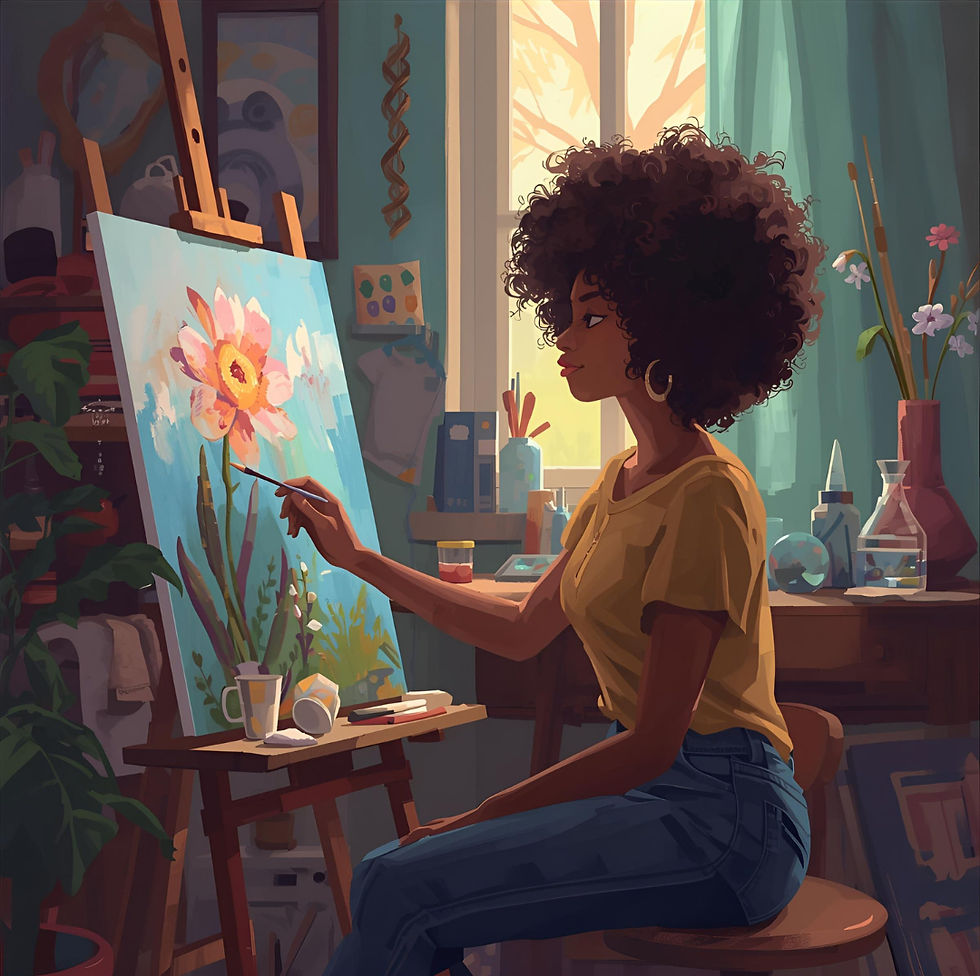How Creative Hobbies Can Aid Trauma Recovery
- Maria Diaz

- Sep 18
- 4 min read
By Maria Diaz, LMHC-D, LPC, EMDR Certified Therapist

When someone has lived through trauma, the journey toward healing can feel long, complicated, and overwhelming. Traditional therapy and support systems play an essential role, but healing doesn’t only happen in the therapist’s office. Sometimes, progress takes root in unexpected places—like a paintbrush, a journal, or a lump of clay. Creative hobbies can be powerful allies in trauma recovery, offering both structure and freedom, expression and calm.
Let’s explore why creative outlets are so impactful and how they can help trauma survivors reclaim their sense of safety, identity, and joy.
Creativity as a Pathway to Expression
One of the biggest challenges of trauma recovery is finding words for experiences that often feel unspeakable. Trauma can disrupt language and overwhelm the nervous system, leaving people struggling to articulate what they’ve been through. Creative hobbies—whether painting, music, writing, or dance—offer a safe way to express feelings without needing perfect words.
Art, for example, allows someone to put emotions on paper that might otherwise feel trapped inside. A painting doesn’t need to be “pretty” to be powerful—it just needs to be authentic. Similarly, journaling or poetry can help survivors explore their inner worlds with honesty and self-compassion, bypassing the need for polished storytelling.
This kind of expression can be deeply validating. It communicates: “My feelings matter, my experiences matter, and I have ways to share them”.
Building Regulation Through Rhythm and Flow
Trauma often disrupts the body’s natural rhythms, leaving people stuck in cycles of hyperarousal (feeling anxious, on edge) or hypoarousal (feeling numb, disconnected). Creative hobbies can gently reintroduce regulation by engaging the body and mind in rhythmic, soothing activities.
Knitting, for instance, has a repetitive and grounding quality. Playing an instrument creates a balance of concentration and movement. Dancing or mindful movement reconnects people with their bodies in safe and empowering ways. These activities encourage a state of “flow”—a mental state where time seems to soften and the nervous system finds relief.
Flow experiences not only reduce stress but also remind survivors that their bodies and minds are capable of joy, presence, and creation, not just survival.
Rebuilding Identity and Agency
After trauma, many people struggle with a sense of lost identity. They may feel defined by what happened to them rather than by who they are. Creative hobbies can help shift that narrative.
When someone writes a short story, they become a storyteller, not just a survivor. When they learn to play guitar, they’re a musician. When they join a pottery class, they’re an artist in community with others. These identities are empowering because they remind people they are more than their trauma.
Engaging in creative hobbies also restores a sense of agency. Trauma often involves loss of control, but choosing colors, deciding what to make, or exploring new techniques are small but significant acts of self-determination. Each choice reinforces the idea: I have a voice, and I get to shape my world.
Creativity as Connection
Healing doesn’t happen in isolation, and creative hobbies can create opportunities for connection. Whether it’s sharing a poem at an open mic, taking a group art class, or simply gifting a handmade craft, creative work invites others into one’s journey.
This kind of sharing fosters community, understanding, and even playfulness—things trauma can steal away. Creativity allows survivors to connect with others on levels that feel safe and meaningful, without needing to disclose every detail of their trauma story.
Practical Tips for Starting a Creative Hobby in Recovery
If you or someone you know is interested in exploring creativity as part of healing, here are a few gentle suggestions:
Start small. You don’t need to invest in expensive supplies or commit to big projects. Even doodling for five minutes a day can make a difference.
Follow curiosity, not perfection. Healing thrives when the focus is on the process, not the product. Allow yourself to experiment without pressure.
Choose what feels safe. Some hobbies may bring up strong emotions, and that’s okay. Find practices that balance expression with grounding.
Create rituals. Setting aside regular time for your hobby can bring comfort and predictability, especially when life feels chaotic.
Seek supportive spaces. Consider joining community classes, online groups, or art therapy workshops if you want connection alongside creativity.



Comments